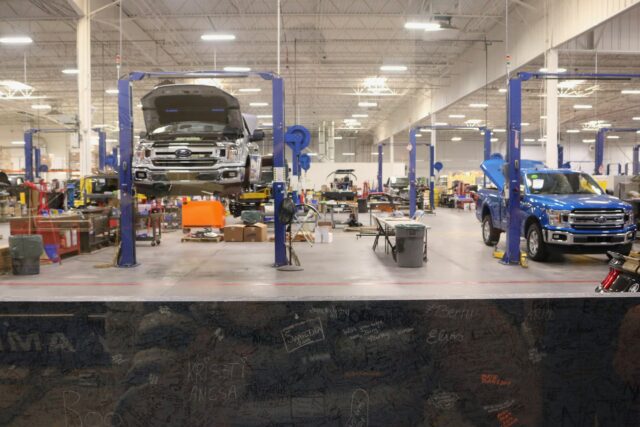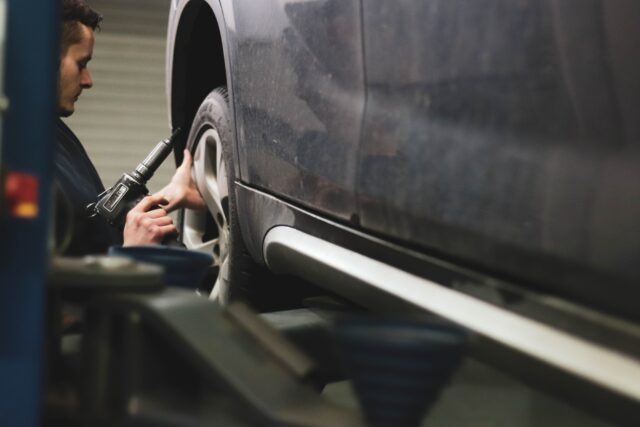How To Prepare Your Car For An MOT
MOT – What Is It?
MOTs are the official vehicle safety test carried out by the Ministry Of Transport. Also known as a VT20 Test Certificate, it’s the thing that makes all motorists sweat. Simply as, one unknown fault could mean you lose your car! However, there are definitely ways to prevent your MOT going wrong!
As dreaded as they are, the safety checks ensure that your car meets the minimum road safety standards, so that you and all other motorists are safe. They were put in place by the DVSA, who also found after 2018 that cars could fall into one of a few categories; Safe, Advisories (safe but keep an eye on possible problems), Minors (safe but small issues that need fixing asap), Majors and Dangerous.
What Do They Look At?
In the MOT itself, the garage will look in depth at the car and all its parts. There are few things which they don’t get involved with – ie the clutch, gearbox and engine, however apart from that these are the components that are scrutinised; The general condition of the car, structure and framework, body work, towbars, tyres + wheels, bonnet, windscreen, suspension, fuel + exhaust systems, seatbelts, seats, doors, mirrors, load security, brakes, lights, washer + wipers, steering and all of the electrical components.
Sure, it’s a pretty lengthy list… but as we’ve said it’s all for the safety of you and others on the road. Nevertheless, there are checks and maintenance you can do and keep up with to ensure that your motor isn’t going to fail.
When Do I Need To Have A MOT?
If your car is more than 3 years old then it is necessary to have an MOT at least once a year. It’s easy to book one online, just take a look at your local garages and give them a ring. You can also set up reminders on your phone from the Government to remind you of when you need one, just in case you forget. Without a valid MOT you are unable to drive the car full stop, so as with most things, it’s better to be safe than sorry. It was found that in 2018-2019 classes 3 + 4 (cars and light vans) had a total of 7,731,619 failed MOTs!
What Are The Most Common Failures?
We had a look through the Government MOT database and spoke to numerous MOT testers, to which we found the most common causes for failing MOT’s, and we found that these were the most common; • Lights and signalling • Suspension • Brakes • Tyres • Seat belts and airbags • Steering • Fuel and exhaust systems • View of road • Registration plates.
What Are Some Easy Checks To DIY?
- Check Brakes – When driving, the brakes shouldn’t feel spongy or pull to the left or right when pressure is applied to them. If this is the case, it will mean that your brake pads most likely need changing! On average, brake pads will need changing after around 50,000 miles, so keeping an eye on them and making sure that you change them can save you hassle when it comes to the MOT.
Furthermore with brakes, making sure that the Brake fluid is at a good level is also crucial. Open the car bonnet when the car is cool and on a flat surface and open the brake fluid reservoir. Using the naked eye, check that the level is between the min-max marking on the tank. If it’s below the marking, you should top it up with brake fluid that matches both the make and model of the car!
- Check The Mirrors – According to the MOT handbook, there are three acceptable (and necessary) mirrors and their positions:
- An exterior mirror or device that provides a view along the offside of the vehicle.
- An exterior mirror or device that provides a view along the nearside of the vehicle.
- An interior mirror or a device which provides a view to the rear of the vehicle.
So when it comes to checking your mirrors before the test, just ensure that they are all positioned correctly, clean with no smudges / dirt, no cracks and that they are in generally good condition.
- Test the Horn – Unless you are the most laid-back motorist and never use your horn, it’s pretty unlikely that you’d be unaware if the horn wasn’t working. That being said, it is still a good idea to give your horn a quick check just by pressing it as you usually would!
- Make Sure All Lights Work – An easy way of checking these, is just to get a friend or family member to come out with you for approximately 5 minutes. Get them to go around the car and make sure that all of your lights are on when you put them on. These include lights in the; front, rear, indicators, side repeaters, brake lights, central repeaters and your front and back fog lights. It’s so simple to fix, but surprisingly it’s the blown bulbs which are one of the biggest MOT failures!
- Check All Warning Lights – Hopefully if any warning lights came on, you would have sorted them out. However, if you’ve skipped over that and never got them done – go do it now! If the MOT tester turns on the car and sees warning lights, you will fail the MOT test instantly. Not to mention that the warning lights could be an indication that something pretty serious is wrong and if left could be very dangerous!
If you do turn on the ignition to find some warning lights, you should check your handbook to identify what the issue is, fix it yourself or if you are unsure then head over to your local garage and ask them to have a look at it.
- Enough Oil – To make sure that the MOT test can fully go ahead and emission levels can be tested, it is essential that you check the oil levels. To check that the levels are sufficient, simply open the bonnet of the car – when the car is cool and on a flat surface. Take the dipstick out of the tank, wipe it with a clean cloth to ensure that you’ve got a clean stick to do the testing with. Dip the dipstick back into the tank, and slowly pull it out. You should be able to see the oil between the min and max line, and similar to the brake fluid, if it doesn’t then you should top up the oil.
The oil is essential in keeping the car in good condition, especially when it comes to the MOT. If you do need to fill up the oil, luckily it is pretty inexpensive, easy and quick!
- Clean the Windscreen – When it comes to the windscreen in an MOT, it can really be a case of your luck falling with the tester on the day. That’s because some marks will pass and others won’t, due to there being no set standards. In practice, the mark shouldn’t be 10mm or over on the drivers side, and no bigger than 40mm on other parts of the screen. Regardless of what they are, it’s probably safest to get all marks sorted and corrected before the MOT just to be on the safe side of things.
It can even be a case where if you’ve got stickers or even the phone holder attached to the windscreen on, you could fail! A good practice before MOTs is to also ensure that the reservoir with the screenwash in, has enough fluid in, squirts the liquid on the screens fine and the wipers are working properly!
- Check the Tyres – As your tyres are the only part of the car that physically touch the road and arguably work the hardest, it’s best to be checking your tyres often and not just before an MOT. Dodgy tyres could cause all kinds of problems including a delayed stopping time and slippery tractions. The legal tyre tread size in the UK is 1.6mm, wrapped around the inside of the tyres. You can check the tread yourself simply with a 20 pence coin by inserting it into the grooves of the tyre. Do this the whole way around, if at any point you can see the outer band of the ring then your tread is actually edging on illegal. If this is the case then it’s definitely worth getting it A. Checked out by a professional and B. Fitted by a professional!
As surprising as it may seem, an MOT sometimes serves as the only thing that reminds people to do checks on their car. It should be urged and encouraged for people to stay on top of their cars all the time. Regardless of an MOT coming up, not maintaining your vehicle’s upkeep could well be an accident waiting to happen!
In fact it has been found that most people who aren’t’ overly ‘car smart’ completely forget about their MOT and end up panic making appointments. It’s always best to ensure that you know when your car last got an MOT so that you can easily make an appointment with lots of time to spare and get it done bit by bit incase there is something wrong with your car so that you can fix them bit by bit without having to be hit by a huge money bill!

 100% Road Legal
100% Road Legal Express Delivery
Express Delivery

